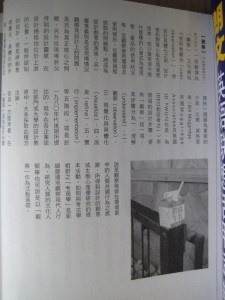Archetypes, stories, rituals, gestures, memories, signs are what designers use to create experience, experience that associate with harmony, caring, share, playful…These associations happens in people’s brain when you use the right signs in the right contexts. As designer, I strive to understand the psychological archetypes behind a certain action and event. For example, flipping pages can be associated with discovering stories which I often refer to when I talked about Come & Draw. Nothing is new. It is about combining the right dots, in other words, it is about discovering and understanding.
Naoto Fukusawa, a japanese designer often talked about super normal. I remember he said something like design is to find the invisable puzzle into the existed environment. I understand as “affordance“, the force in the environment afford something to happen. (James.J. Gibson). The following is his most used examples:
(A milk box placed on the sidewalk armrest whose form happens to be identical with the square milk box bottom.)
Naoto Fukusawa explore affordance in the field of form giving. I found it is interesting as well in service design. How to find the puzzle in everday life, arrange the elements to afford more better everyday life. I believe that service design is not about create something new and foreign, it is deeply rooted in the everyday system, to find out what is already there, arrange elements to make “affordance” happen. In this sense, insight and being exposed to the situations are crucial. What if this discovery process spread to the users? Since the design will be finally used by users, so why not having the users to do discovery themselves. Then designers’ task is to affinity, synthesize the patterns (combine the dots) into tangible prototypes. Co-design accelerates this “find the puzzle” process, especially in a service, users themselves are part of the ecosystem.
The question is , through years of training, we are sensitive to certain details and gestures. How we inspire users to discover the service journey in a fun and organized way ?
Some thoughts, especially when design with children (which is my focus):
-Can codesign in real life public service become part of the school curriculum? as project-based learning? Can Reggio’s long term project-based learning become codesign projects in public sectors?
-Communicate in a fun way, use of comic and open-ended & exploratory questions
-Projects that resonate with children’s everyday life (arise interest and something they can talk about), a good example of how to engage children to recycle batteries.
–Use narrative through the whole process. ( a pull to follow the process)
-Service prototyping ( what if, rehearsal the future) combined with children’s games (like play house, role play, imagine play)

Leave a Reply